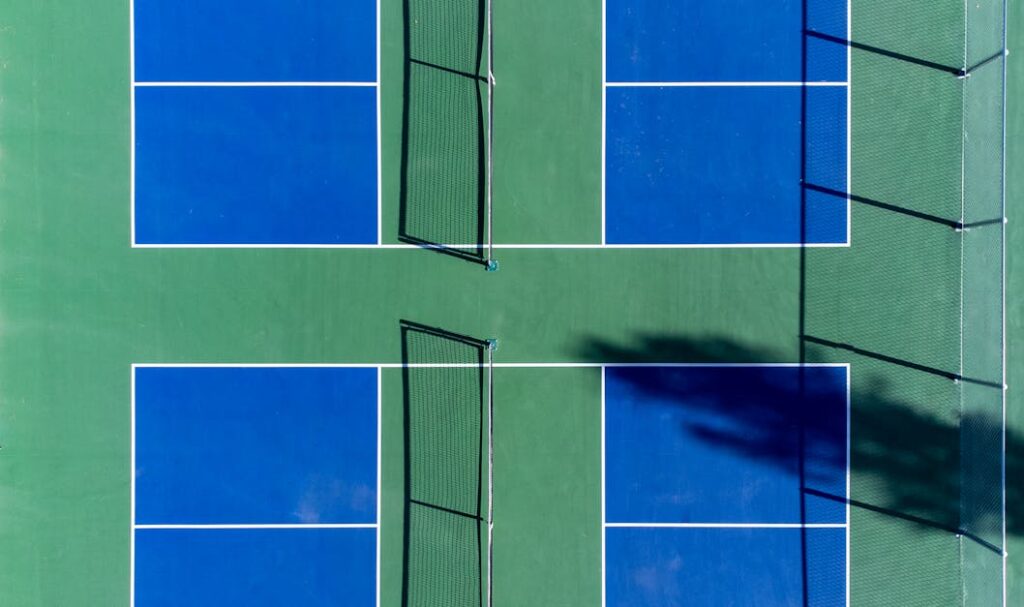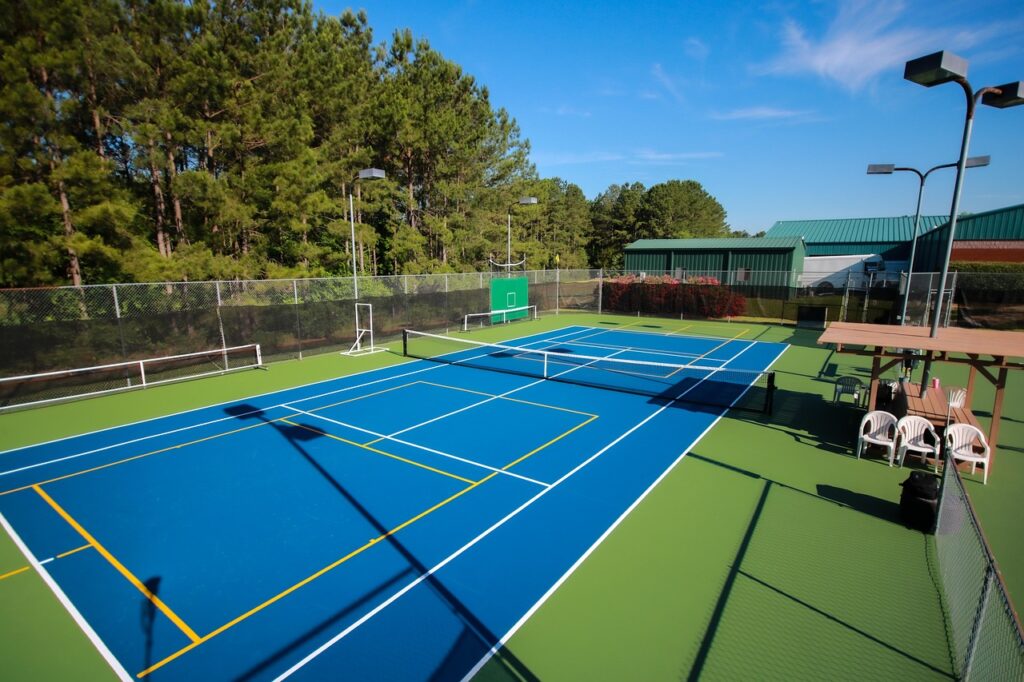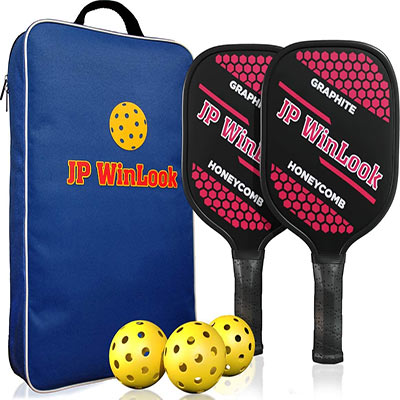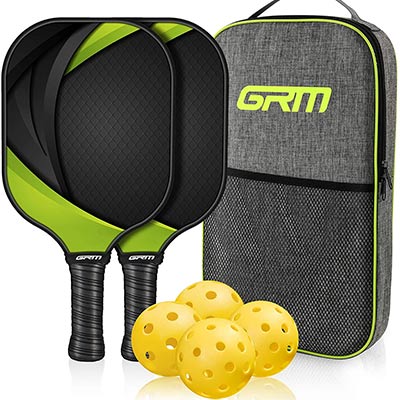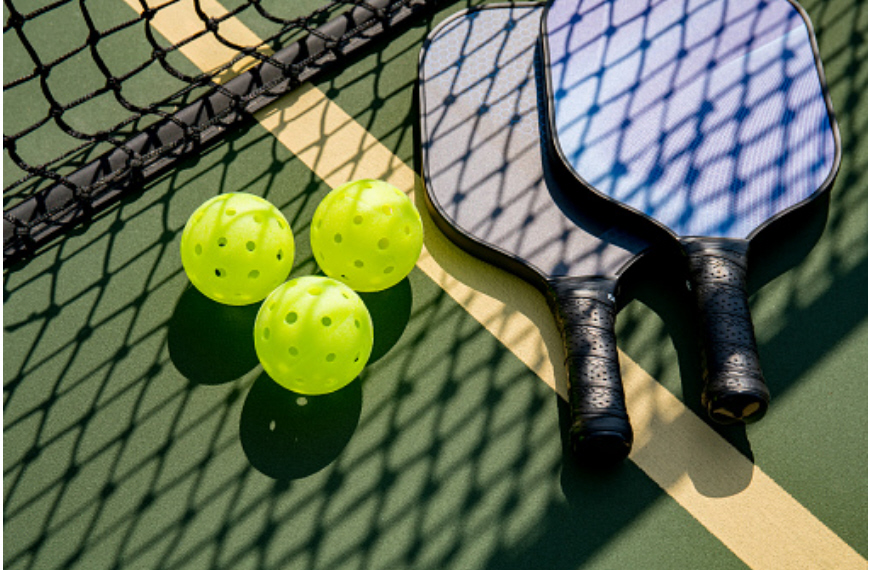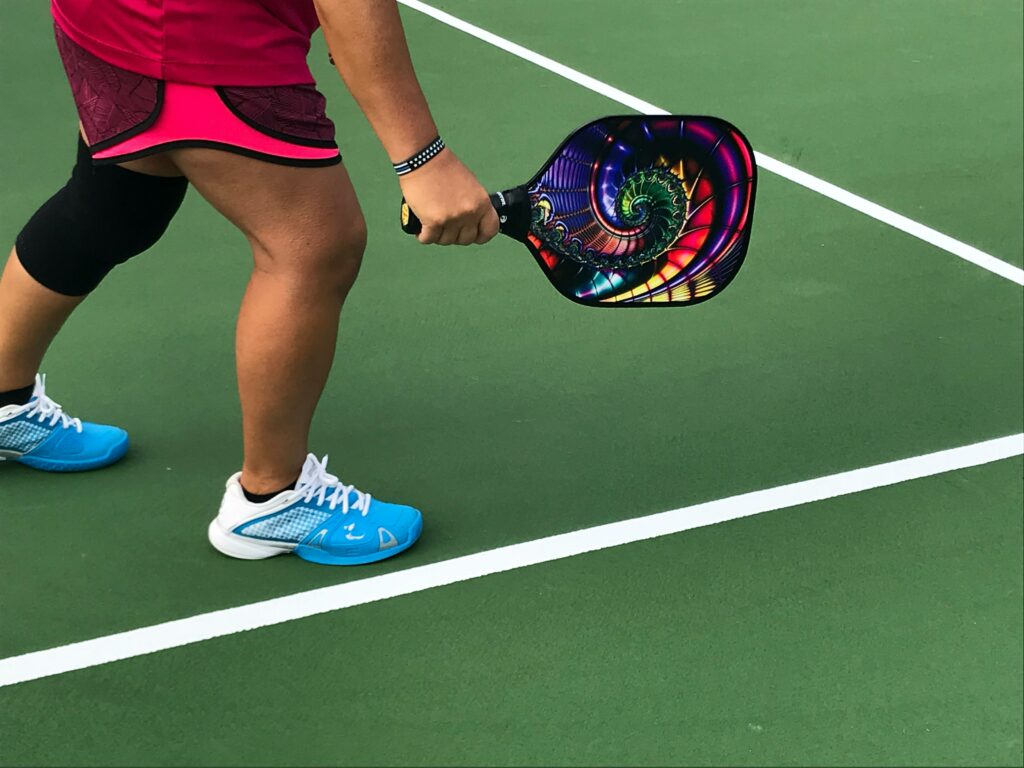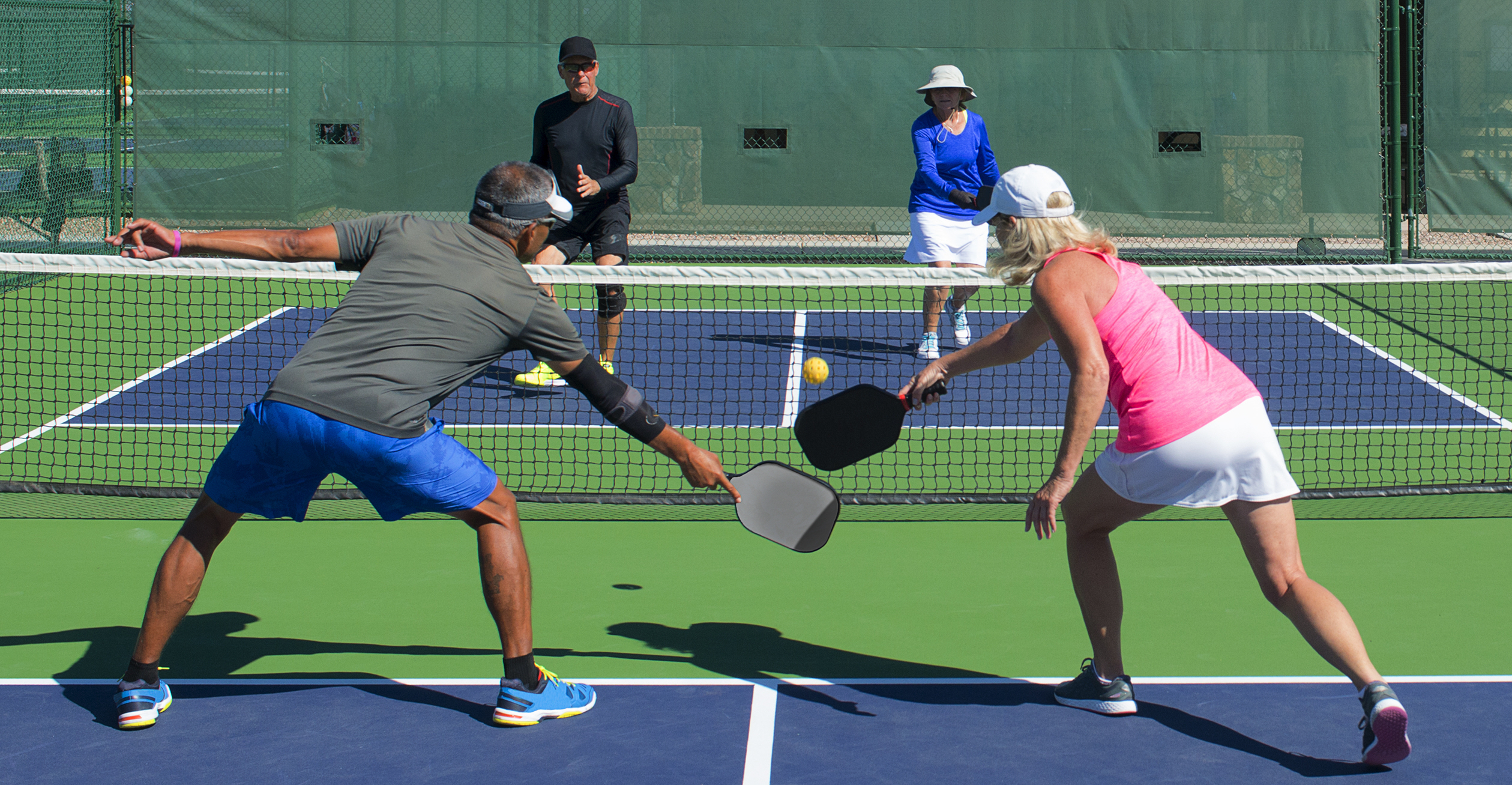
Pickleball: The Quirky Sport That Conquered America
On a drizzly summer afternoon in 1965, on Bainbridge Island near Seattle, three dads faced a familiar parental dilemma: how to entertain their bored children during vacation. Joel Pritchard, a congressman, along with his friends Bill Bell and Barney McCallum, improvised a game using ping-pong paddles, a perforated plastic ball, and a badminton court. Little did they know that their spontaneous creation would evolve into America’s fastest-growing sport, with more than 4.8 million players today.
“We just wanted to give the kids something to do,” Pritchard’s wife Joan would later recall. It was she who named the curious new activity “pickleball” – not after the pickle boat in crew where leftover oarsmen rowed together (a common misconception), but after the family dog, a cocker spaniel named Pickles who would chase after the errant balls.
Or did she?
The Pickle Controversy
One of pickleball’s most enduring mysteries involves its peculiar name. While the dog story has been repeated countless times, there’s a timeline problem: according to some family accounts, Pickles the dog didn’t join the Pritchard household until a couple of years after the game was invented and named.
Joan Pritchard offered an alternative explanation years later, saying the name came from the “pickle boat” reference, describing mismatched leftover crews in rowing. This explanation makes contextual sense – pickleball was cobbled together from bits and pieces of other sports. But the dog tale persists, perhaps because it’s more charming.
Barney McCallum, the last surviving founder, maintained until his death in 2019 that both stories contained elements of truth: the game was initially named after the pickle boat concept, but the dog, named coincidentally, came to embody the game’s spirit. Perhaps fittingly for a sport built on improvisation, its very name remains pleasantly ambiguous.
Strange Rules and Curious Origins
Pickleball’s peculiar rules evolved organically. The non-volley zone near the net (commonly called “the kitchen”) wasn’t part of the original game. It was added when the founders noticed that players would stand right at the net and smash the ball downward – a strategy that ended points too quickly and wasn’t much fun.
The requirement to let the ball bounce once on each side before volleys became legal (the “double bounce rule”) similarly evolved to extend rallies and make the game more accessible to players of different abilities. These distinctive rules weren’t created from careful sports science – they emerged from trial and error among friends seeking balanced gameplay.
Even the court dimensions have an unusual origin story. Initially played on a badminton court (20′ x 44′), the founders eventually settled on a 20′ x 44′ dimension – not through careful calculation, but because it fit perfectly on the Pritchards’ driveway. This “make do with what you have” beginning explains much about pickleball’s accessible charm.
The Underground Years
For nearly two decades, pickleball remained a largely regional curiosity confined to the Pacific Northwest. The first tournament wasn’t held until 1976, and the USA Pickleball Association (originally the U.S.A. Pickleball Association) wasn’t formed until 1984, nearly 20 years after the sport’s invention.
During these underground years, pickleball spread primarily through community centers, YMCAs, and retirement communities. Its popularity among retirees – particularly in warm-weather states like Florida and Arizona – gave pickleball its initial reputation as a “senior sport.” This perception persists despite the game’s increasing popularity among younger players today.
Perhaps the most remarkable aspect of pickleball’s early spread was how it happened without social media, viral videos, or corporate sponsorship. The game spread person-to-person, court-to-court, often through snowbirds who would learn the game in retirement communities down south, then bring it back to their northern hometowns.
The Accidental Inclusivity
While not planned, pickleball’s design makes it uniquely inclusive. The smaller court (one-fourth the size of a tennis court) means less running – appealing to older players and those with mobility limitations. Yet the game’s strategic elements and quick exchanges at the net appeal to competitive athletes seeking a challenge.
This inclusivity extends to economic accessibility as well. While high-end equipment exists today, the basic requirements to play pickleball remain remarkably affordable – a concrete surface, a portable net, simple paddles, and plastic balls. For comparison, the cost to outfit a beginning pickleball player is roughly one-fifth that of a beginning tennis player.
The court’s intimate dimensions also foster social interaction. Players are close enough to chat between points, and the smaller teams (singles or doubles, with doubles being more common) create more opportunities for conversation than larger team sports. This social aspect helped the game spread through community networks that might otherwise be resistant to new sports.
The Pandemic Explosion
While pickleball had been growing steadily since the early 2000s, the COVID-19 pandemic created perfect conditions for the sport to explode in popularity. As an outdoor activity with natural distance between players, pickleball offered safe socialization during a time of isolation.
The pandemic years saw pickleball courts multiplying exponentially. According to the Sports & Fitness Industry Association, pickleball grew by a staggering 39.3% between 2019 and 2021 – more than any other sport in America. Courts appeared in parks, driveways, and repurposed tennis facilities.
What’s particularly fascinating is that unlike many pandemic trends that faded as restrictions lifted, pickleball’s growth has continued unabated. New dedicated facilities open weekly, and the sport has successfully bridged demographic divides, with significant growth among players under 24.
The Professional Evolution
Despite its casual origins, pickleball has developed a professional circuit with surprising speed. The Professional Pickleball Association (PPA) Tour now offers over $5 million in prize money annually – a figure that would astonish the game’s founders, who played with wooden paddles and wiffle balls.
Today’s professional pickleball features specialized composite paddles, strategic serving techniques, and athletic play that bears little resemblance to the backyard game from 1965. Top professionals like Ben Johns and Anna Leigh Waters have become celebrities within the pickleball community, with signature paddles and coaching businesses.
Yet unlike many sports where professional and recreational versions diverge dramatically, pickleball has maintained a connection between its professional and casual manifestations. The same basic rules apply whether you’re playing for a championship or at a family reunion.
Cultural Impact
Pickleball’s rise reflects broader cultural trends in American life. Its popularity among baby boomers highlights the desire for active aging and social connection in retirement. Its growth among younger players speaks to the appeal of activities that combine physical activity with social interaction.
The language of pickleball has seeped into everyday conversation, with terms like “dinking” (soft shots hit from the kitchen line) and “pickled” (losing without scoring a point) becoming part of players’ vocabulary. Pickleball communities have their own cultures, inside jokes, and social hierarchies.
Perhaps most remarkably, pickleball has achieved something rare in modern America – it has created common ground across political, generational, and economic divides. On courts across the country, retirees play alongside millennials, executives alongside blue-collar workers, creating fleeting but genuine community.
The Future of Pickleball
What began with three families and a makeshift court has grown into a global phenomenon with Olympic aspirations. The International Federation of Pickleball now has member countries on six continents, and advocates hope to see the sport included in the Los Angeles Olympics in 2028.
But pickleball’s most enduring legacy may be how it has challenged our assumptions about sports adoption. In an era dominated by digital entertainment, this decidedly analog activity – with its whimsical name and simple equipment – has demonstrated that physical play and face-to-face competition still hold powerful appeal.
As USAPA founder Sid Williams once remarked: “Pickleball isn’t just a sport; it’s a solution to the problem of how we stay active and connected in modern life.”
Whether named after a dog or a boat, played by seniors or college students, competitively or casually, pickleball continues to evolve – all while maintaining the spirit of those first improvised games on a drizzly Pacific Northwest afternoon, when three dads just wanted to give their kids something to do.
